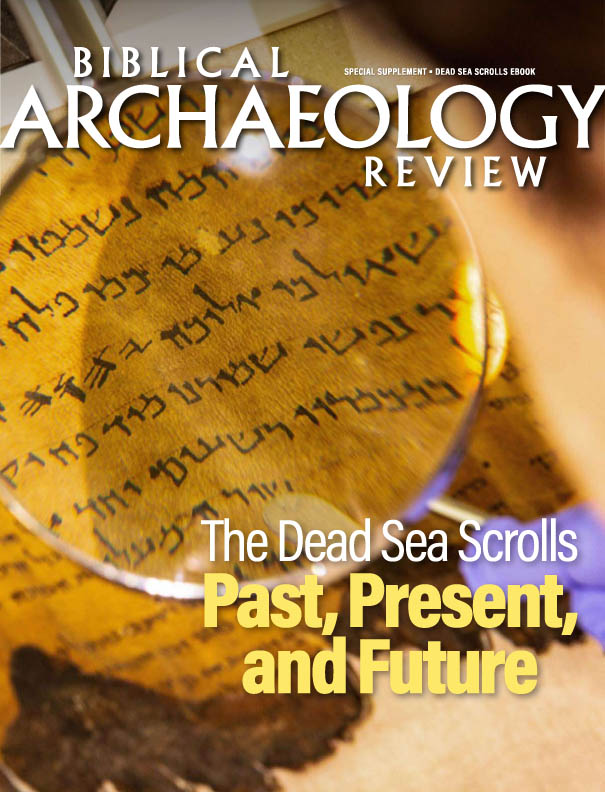According to the Israel Antiquities Authority (IAA), an incredibly rare papyrus with Paleo-Hebrew text dating to the time of the First Temple has been recovered by its Antiquities Theft Prevention Unit. The IAA claims the papyrus, which contains just four lines of text, is one of only three papyrus documents to date to this period and, therefore, offers a unique glimpse into the world of Jerusalem during the time of the biblical kings. However, the papyrus is an unprovenanced object that may have originated on the antiquities market, which has caused some scholars to be more cautious when judging its date and authenticity.

IAA Announces a Rare Treasure
According to the IAA, the papyrus fragment, though damaged, includes several Hebrew words that reveal it is part of a letter with instructions to a recipient: “To Ishmael, send…” The letter was likely a request to Ishmael to send commodities to the writer of the text. The IAA’s paleographic examination of the paleo-Hebrew text determined that it dates from the late seventh to sixth centuries B.C.E. Radiocarbon analysis of the papyrus returned a similar date.
However, some scholars have cautioned that radiocarbon dating is not sufficient to prove the authenticity of a papyrus that lacks a secure archaeological provenance. As stated by Christopher Rollston, Professor of Northwest Semitic Languages and Literatures at George Washington University, “Modern forgers can, have, and still do, use such ancient media to produce forgeries in the modern period.” According to Rollston, while the papyrus might turn out to be authentic, it is important that scholars “tap the brakes … rather than jumping to conclusions” as further scientific examination of the document is undertaken.
If authentic, the Ishmael Papyrus, as it is being called, would be one of only three such documents in the IAA’s Dead Sea Scrolls collection that are thought to date to the First Temple period. According to Joe Uziel, Director of the IAA’s Dead Sea Scrolls Unit, it is possible that Ishmael was an administrative official in the Kingdom of Judah. Several royal stamp seals bearing the name Ishmael have been discovered, including one reading “To Ishmael, son of the king.” But given that Ishmael was such a common name during the period, it is difficult to identify the Ishmael in the papyrus with a specific individual.
“Towards the end of the First Temple period, writing was widespread,” said Uziel. “This is evident from many finds, including groups of ostraca (documents written on pottery sherds) and stamp seals with writing, that have been discovered in many ancient urban settlements, including in the royal capital of Jerusalem. However, First Temple-period documents written on organic materials—such as this papyrus—have scarcely survived. Whilst we have thousands of scroll fragments dating from the Second Temple period, we have only three documents, including this newly found one, from the First Temple period.”
It is important to note that despite the lack of papyri documents from this time, it can be deduced, based on the growing number of bullae (used to seal papyrus documents) which have been found on excavations, that papyrus was the predominant medium for writing during the First Temple period. For a very nice biblical example of this practice, see Jeremiah 32:9-16. Unfortunately, this organic material is rarely preserved outside of regions with exceptionally dry climates, such as the Judean Desert. Thus, while evidence indicates that large quantities of paleo-Hebrew records were kept in Jerusalem and other Judean cities, they have been lost to time.
A Papyrus with a Story
The story of how the Ishmael Papyrus came to be known to the IAA is no less intriguing than the artifact itself. According to the IAA, an American tourist visiting Jerusalem in 1965 came into possession of the small papyrus fragment, which she acquired from Joseph Saad, Curator of the Palestine Archaeological Museum (now the Rockefeller Museum), and Halil Iskander Kandu, a well-known antiquities dealer from Bethlehem who sold thousands of such fragments. Upon returning home to Montana, the woman hung the prized fragment on a wall in her house.
Some 50 years later, Shmuel Ahituv, a professor of biblical and Near Eastern studies at Ben Gurion University, came across an early photograph of the fragment in the files of the late Israeli epigrapher Ada Yardeni. Realizing what he had uncovered, Ahituv contacted the IAA. Together, Ahituv and Eitan Klein, Deputy Director of the IAA’s Antiquities Theft Prevention Unit, began the hunt for the fragment based on the limited notes left behind by Yardeni.
Eventually, Ahituv and Klein traced the fragment to the home of the Montana woman’s son, who they invited to Israel to tour the IAA’s Dead Sea Scrolls lab. After the visit, the son was convinced that the lab had the best conditions to conserve and research the rare document, and he generously donated it to the IAA.
According to IAA Director-General Eli Eskosido, “Repatriating this rare document is part of an extensive process led by the Israel Antiquities Authority, aiming on the one hand, to prevent the illegal sale of the ancient scrolls that were plundered from the Judean Desert in the past, and on the other hand, to prevent further plundering of the cultural heritage finds extant in the desert today. In this context, the Israel Antiquities Authority initiated the Judean Desert Survey, which reestablished Israeli control of the area, spread a blanket of legal enforcement, and propagated research activity on the items of cultural heritage found in the Judean Desert caves.”
Ed. Note: Christopher Rollston is a member of the Editorial Advisory Board of Biblical Archaeology Review.
Read more in Bible History Daily:
Decayed Papyrus Hints that More Dead Sea Scrolls Remain
The “Gospel of Jesus’ Wife” Papyrus Revisited
What Are the Dead Sea Scrolls?
The post Israel Claims Rare Paleo-Hebrew Papyrus Recovered appeared first on Biblical Archaeology Society.




0 Commentaires